 Your new post is loading...
 Your new post is loading...

|
Scooped by
Gust MEES
|
Ein Tor zur Mondoberfläche – ein solches soll bald in Luxemburg seinen Platz finden. Dabei handelt es sich um eine sogenannte Dusty Thermal Vacuum Chamber – kurz DTVC (Staubige Thermal-Vakuum-Kammer). Die DTVC wird in den Räumlichkeiten des European Space Innovation Centre in Belval in Betrieb genommen. Dies könnte bereits 2025 so weit sein, wie das European Space Resources Innovation Centre (Esric) am Dienstag mitgeteilt hat.
Das Kick-off-Meeting zur Entwicklung und Herstellung dieser neuartigen Kammer fand bereits am 13. Juni 2023 im niederländischen Estec (dem Europäischen Weltraumforschungs- und Technologiezentrum) statt. Dabei führte die Europäische Weltraumorganisation (ESA) das Meeting mit Spartan Space, Haux Life Support, Maana Electric und dem European Space Resources Innovation Centre (Esric) – Teil des Luxembourg Institute of Science and Technology (LIST) – durch. Learn more / En savoir plus / Mehr erfahren: https://www.scoop.it/topic/luxembourg-europe/?&tag=Space

|
Scooped by
Gust MEES
|
C'est une révolution pour le secteur spatial, doublée d'un coup de projecteur, encore, sur le Luxembourg. Lundi, le Luxembourg Institute of Science and Technology (LIST) et la société Gradel ont scellé un partenariat qui donne naissance, à Hautcharage, à un laboratoire inédit associant chercheurs et ingénieurs des deux structures. L'objectif est simple, développer une technologie pour créer, à l'avenir, des satellites (entre autres) avec des composants ultralégers. Car l'une des clés du développement de l'industrie spatiale réside dans le poids des matériaux utilisés, essentiellement métalliques à l'heure actuelle.
Aujourd'hui, un kilo envoyé dans l'espace coûte de 5 000 à 10 000 euros. La technologie développée au Luxembourg permettra de réduire ce poids, et donc proportionnellement les coûts, «jusqu'à 75%». Comment? Grâce à un système de tissage à base de fibres de carbone ou d'autres matières naturelles, configuré de façon digitale et ultraprécise, puis reproduit à la main ou via un bras robotique unique lorsqu'il s'agira de produire en série. Les géants français Airbus et Thales, mais aussi l'Allemand OHB, ont déjà montré leur intérêt et scellé un contrat exclusif avec le Luxembourg. Learn more / En savoir plus / Mehr erfahren: https://www.scoop.it/t/luxembourg-europe/?&tag=Research https://www.scoop.it/t/luxembourg-europe/?&tag=Space

|
Scooped by
Gust MEES
|
Das "Luxembourg Institute of Science and Technology" (LIST) wird das neue Innovationszentrum für "Space Resources" beherbergen. Die Forschungseinheit soll ihre Arbeit noch dieses Jahr in Beles aufnehmen.
In seinem Bestreben, zu einem international anerkannten Zentrum für den Abbau von Rohstoffen im Weltall zu werden, geht Luxemburg den nächsten Schritt. Am Dienstag verkündeten Wirtschaftsminister Franz Fayot und Forschungsminister Claude Meisch, dass noch in diesem Jahr ein Innovationszentrum für „Space Resources“ aus der Taufe gehoben werden soll.
Das Projekt mit dem Namen „European Space Resources Innovation Centre (ESRIC)“ soll am „Luxembourg Institute of Science and Technology“ (LIST) in Beles angesiedelt werden. Das ESRIC ist das nächste Puzzlestück bei dem Versuch, ein glaubwürdiges „Ökosystem“ für diesen Industriezweig in Luxemburg aufzubauen. Denn das ESRIC soll nicht nur eigene Forschung zur Raumfahrttechnik betreiben, sondern seine Forschungsinfrastruktur auch privaten Firmen aus dem Sektor zur Verfügung stellen und als zentraler Knotenpunkt für die wissenschaftliche Auseinandersetzung mit dem Thema dienen.
Learn more / En savoir plus / Mehr erfahren: https://www.scoop.it/t/luxembourg-europe/?&tag=Research https://www.scoop.it/t/luxembourg-europe/?&tag=Space

|
Scooped by
Gust MEES
|
Au LIST, la recherche sur les nano-matériaux va bon train
David Duday pince un de ses cheveux grisonnants: «Imaginez 10.000 fois moins épais». Un ordre de grandeur difficile à concevoir pour le commun des mortels. Et pourtant, le monde nanométrique est une source d’innovations qui révolutionne notre quotidien. Car des scientifiques comme David Duday, de l’unité nanomatériaux du département «Materials Research and Technology» au «Luxembourg Institute of Science and Technology» sont en mesure de créer des nano-structures capables par exemple de donner à des surfaces des propriétés très particulières. Ainsi, en ce moment, Duday et son équipe travaillent dans le cadre du projet NBactspace, financé par l’Agence Spatiale Européenne sur de nouveaux revêtements non toxiques et anti-microbiens pour l’intérieur des vaisseaux spéciaux.
Il y a en substance un double problème à résoudre: d’un côté, éviter que des micro-organismes comme des bactéries, des champignons ou autres algues ne prolifèrent dans ces habitacles et ne génèrent donc pas d’effets nocifs pour l’homme. De l’autre côté, les revêtements actuels sont composés de particules de métaux lourds qui peuvent devenir eux-même toxiques pour la santé suite au relargage de ces particules dans l’habitacle qui conditionne potentiellement une exposition de longue durée. Learn more / En savoir plus / Mehr erfahren: https://www.scoop.it/t/luxembourg-europe/?&tag=LIST https://www.scoop.it/t/luxembourg-europe/?&tag=Nano

|
Scooped by
Gust MEES
|
LIST and ispace Europe recently have begun initial research work on the development, by September 2020, of compact mobile mass spectrometry technology, making it possible to prospect for lunar resources.
In 2017, the Luxembourg Institute of Science and Technology (LIST) and ispace Europe – a Japanese lunar exploration company whose European headquarters are in Luxembourg – formed a strategic partnership with the aim of developing a first mission to prospect for resources on the Moon and, in particular, to detect and analyse water. A year later, initial research work on the development of an instrument capable of detecting water in situ at a lunar pole and performing an initial mapping of the water distribution in a polar region truly began. October 2018 saw the start-up of the dedicated FOCAL1DS - "Space Deployable 1-Dimensional Focal Plane Detector for Magnetic Sector Mass Spectrometer" research project, funded by the Luxembourg National Research Fund (FNR), which will run for two years. Learn more / En savoir plus / Mehr erfahren: https://www.scoop.it/t/luxembourg-europe/?&tag=Space

|
Scooped by
Gust MEES
|
THE DAILY WORK OF AN RTO #3: NEW WINDSHIELDS
PUBLISHED ON 24/10/2018
The Luxembourg Institute of Science and Technology (LIST) has published its new corporate video presentation providing its viewers with a closer look at the daily work of an RTO. In four and a half minutes, L.A.I.L.A (LIST’s Artificial Intelligence Learning Avatar) pin-points several innovative technologies or solutions developed at LIST, starting its journey at street-level before gaining height towards the stars.
LIST launches a series of short news, each representing a part of the new corporate video to be found on LIST video channel. The third issue of “The daily work of an RTO” series is focused on new windshields.
L.A.I.L.A explains:
“New windshields will prevent the glass from fogging up and heating the inside of the car. The technology is perfectly invisible and, as we speak, it’s being developed and tested at LIST.”
The next issue of this news series will focus on smart cities. To get more information on what LIST is developing, we invite you to watch the full version of the video:
Learn more / En savoir plus / Mehr erfahren: https://www.scoop.it/t/luxembourg-europe/?&tag=LIST

|
Scooped by
Gust MEES
|
Le Luxembourg, centre mondial de l'innovation?
LUXEMBOURG - Belval doit devenir la Silicon Valley européenne. Le Fonds national de la recherche a présenté vendredi son bilan pour 2017 et ses ambitions pour l'avenir.
La «Maison du Savoir» est le cœur du parc scientifique d'Esch-Belval. Le FNR y est désormais aussi logé, avec l'administration de l'Uni. (photo: Editpress/Fabrizio Pizzolante)
Le Luxembourg doit devenir la première destination des chercheurs dans les prochaines années. Le Fonds national de recherche (FNR) reçoit davantage de fonds pour cet objectif: entre 2018 et 2021, le financement du FNR par l'État s'élève à 341 millions d'euros, contre 100 millions d'euros pour les quatre années précédentes.
En 2017, le FNR a distribué 66,2 millions d'euros pour 240 projets. Les bourses de recherche ont bénéficié aux scientifiques de l'Université de Luxembourg et à d'autres organismes de recherhce comme le List, le LIH, le LISER ou encore le Centre hospitalier de Luxembourg. Doctorants et post-docs sont également soutenus.
Learn more / En savoir plus / Mehr erfahren: https://www.scoop.it/t/luxembourg-europe/?&tag=Research

|
Scooped by
Gust MEES
|
TERRESTRIAL MAGNET FOR A SPACE INDUSTRY
Against this backdrop, Luxembourg two years ago launched its SpaceResources.lu initiative to support private-sector efforts to identify, access and collect valuable resources from space bodies. The legislation, which came into force in August 2017 and offers legal clarity to companies on the ownership and use of their discoveries, establishes a legal and regulatory regime for authorisation and oversight of space exploration and resource extraction activities. �
In addition to the European subsidiaries of leading asteroid mining start-ups, the Grand Duchy is now hosting businesses in fields ranging from space-based data and nanosatellite development to in-orbit manufacturing and lunar exploration. The government has also concluded space co-operation agreements with Japan, the United Arab Emirates and China, with other countries likely to follow.
Luxembourg – which arguably invented today’s satellite broadcasting and telecommunications landscape with its creation in 1985 of the Société Européenne des Satellites, now the world’s largest private sector satellite operator – is an active member of the European Space Agency and in particular its ARTES programme to develop innovative satellite communications systems and services. The government encourages the development of space activities through a variety of financial support initiatives, most recently a planned dedicated space venture capital fund.
Learn more / En savoir plus / Mehr erfahren: https://www.scoop.it/t/luxembourg-europe/?&tag=Space

|
Scooped by
Gust MEES
|
"CHERCHEURS A L'ECOLE": PROMOTING EXCHANGE BETWEEN RESEARCHERS AND SOCIETY - PUBLISHED ON 29/03/2018
From 19 to 23 March 2018, the Luxembourg Institute of Science and Technology (LIST) participated in the 8th edition of Chercheurs à l’école organised by the Luxembourg National Research Fund (FNR).
Chercheurs à l'école 2018 clearly fulfilled its objective of introducing young people to the profession of researcher that many know little about. With 124 Luxembourg researchers, 75 delivered sessions within 28 different secondary schools across Luxembourg, it was the largest participation yet: congratulations to all researchers and schools taking part in this inspiring FNR initiative.
“We walked around 40 very interested students through our academic background, as well as our interdisciplinary activities in the field of research and development, conveying and discussing advice, motivation and experiences. It is an enriching and motivating event for the students, as well as for the scientists and it is always a lot of fun every year.” highlighted Dr Christian Penny, Research and Technology Associate in Microbiology at LIST, to the event organiser (Source: www.fnr.lu).
Alongside their counterparts from both public and private sectors, more than 20 LIST PhD candidates, postdoctoral and experienced researchers, specialised in the environmental, IT and materials research domains, shared their personal stories and passion for science and presented their work to the young audience. What an enriching experience!
CONTRIBUTING TO A BETTER FUTURE INTO THE SCIENTIFIC WORLD
Chercheurs à l’école was a perfect opportunity for LIST and its researchers to join the community and share their passion and experience with the younger generation. In this context, the institute supports the FNR in the national initiative aiming at promoting exchange between researchers and society.
The next event organised by the FNR are the Researchers Days to be held on Friday, 30th November and Saturday, 1st December 2018 at the Rockhal venue. LIST will be part of this 2018 edition which is going to be fun and challenging at the heart of the Belval Innovation Campus. Various hands-on science workshops are currently being identified within LIST research teams. Learn more / En savoir plus / Mehr erfahren: https://www.scoop.it/t/luxembourg-europe/?&tag=Education

|
Scooped by
Gust MEES
|
Le List vient de placer sur les rails Lion Nano-Systems, une spin-off chargée de commercialiser un outil d’exploration de l’infiniment petit développé par l’institut de recherche luxembourgeois.
Luxembourg Ion Optical Nano-Systems sàrl (Lion Nano-Systems), une spin-off créée en août 2017 avec le soutien du Luxembourg Institute of Science and Technology (List), volera désormais de ses propres ailes dans les locaux du Technoport.
Son objectif sera désormais de commercialiser le Vector 500 Sims, un outil développé au sein du List pour explorer l’infiniment petit, dont elle détient la licence commerciale après le dépôt de plusieurs brevets par le List.
Ce nouvel outil, qui combine microscope puissant et instrument d’imagerie à spectrométrie de masse à ions secondaires, permet l’analyse de surfaces avec une résolution autour de 10 nanomètres, c’est-à-dire des surfaces jusqu’à 10.000 fois plus petites que le diamètre d’un cheveu humain. Selon le List, le Vector 500 Sims se révèle ainsi être l’outil le plus performant sur le marché pour des applications de recherche et développement dans des domaines aussi variés que les études toxicologiques sur les nanoparticules, le photovoltaïque, les semi-conducteurs, les batteries Li-ion, les aciers, la cosmétique et la médecine. Learn more / En savoir plus / Mehr erfahren: https://www.scoop.it/t/luxembourg-europe/?&tag=LIST https://www.scoop.it/t/luxembourg-europe/?&tag=Nano

|
Scooped by
Gust MEES
|

|
Scooped by
Gust MEES
|

|
Scooped by
Gust MEES
|
EASING THE WAY TOWARD GRPD
PUBLISHED ON 14/12/2017
A few days after receiving the “RegTech Innovation of the Year” Award together with eProseed, the Luxembourg Institute of Science and Technology (LIST) is pleased to announce that on 5 December 2017, its industrial partner eProseed was granted the "IT Development Company of the Year" award by the members of the Luxembourg ICT community at the annual IT One Gala Dinner.
eProseed and LIST achieved a successful collaborative work with the development of the tool enabling organisations to evaluate the extent of their compliance with the new GDPR through a comprehensive database of 350 regulatory requirements.
As mentioned during the award ceremony, the decisive point that justified the jury's choice was the GDPR Compliance Support Tool, a software tool enabling organisations to self-assess their level of compliance with the EU GDPR, which comes into force in May 2018. The GDPR Compliance Support Tool was developed in tight collaboration with Luxembourg's data protection authority (CNPD), LIST and Digital Luxembourg, the government initiative that supports public and private actions in the digital area. A tool of this kind is a premiere in the European Union. Learn more / En savoir plus / Mehr erfahren: https://www.scoop.it/t/luxembourg-europe/?&tag=LIST https://www.scoop.it/t/luxembourg-europe/?&tag=CNPD https://www.scoop.it/t/luxembourg-europe/?tag=Digital+L%C3%ABtzebuerg https://www.scoop.it/t/luxembourg-europe/?&tag=GDPR
|

|
Scooped by
Gust MEES
|
Es ist eine Revolution für den Raumfahrtsektor, die auch gleichzeitig Luxemburg ins Rampenlicht stellt. Am Montag haben das Luxembourg Institute of Science and Technology (LIST) und das Unternehmen Gradel einen Vertrag unterzeichnet, der die Schaffung eines Forschungslabors in Oberkerschen vorsieht. Darin sollen in Zukunft Forscher und Ingenieure Hand in Hand zusammen arbeiten. Das Ziel sei, eine Technologie zu entwickeln, die unter anderem dazu dienen soll anhand von ultraleichten Komponenten Satelliten zu bauen. Denn einer der Schlüssel zur Entwicklung der Raumfahrtindustrie liege im Gewicht der benutzten Materialien, die derzeit vorwiegend aus Metall bestehen, so das LIST.
5000 bis 10.000 Euro koste es derzeit, ein Kilogramm Material ins All zu schicken. Die in Luxemburg neu entwickelte Technologie könnte dieses Gewicht – beziehungsweise die Kosten – «um bis zu 75 Prozent» reduzieren. Ein Gewebe-System aus Kohlen- oder anderen Naturfasern, das digital und mit höchster Präzision erstellt und später von Hand oder mittels Robotertechnik serienmäßig produziert wird, soll die Lösung sein. Nicht nur die französischen Unternehmen Airbus und Thales, sondern auch die deutsche Technologiegruppe OHB hätten bereits Interesse dafür gezeigt und einen exklusiven Vertrag mit Luxemburg unterzeichnet, so das LIST. Learn more / En savoir plus / Mehr erfahren: https://www.scoop.it/t/luxembourg-europe/?&tag=Research https://www.scoop.it/t/luxembourg-europe/?&tag=Space

|
Scooped by
Gust MEES
|
Après le projet Hephoto, le List signe un second partenariat avec l’entreprise 3D-Oxides pour développer l’hydrogène propre. Ils se concentreront cette fois sur le titanate de strontium. L’objectif: une preuve de concept dans quatre ans, pour une industrialisation dans dix ans.
Le Luxembourg Institute of Science and Technology (List) annonce la couleur: le vert. Il met les bouchées doubles pour développer l’hydrogène propre.
Cet élément chimique se trouve dans l’eau et les hydrocarbures, comme le pétrole, le gaz, le charbon. Il permet de produire et stocker de l’énergie sans émettre de gaz à effet de serre. Learn more / En savoir plus / Mehr erfahren: https://www.scoop.it/t/luxembourg-europe/?&tag=Research https://www.scoop.it/topic/luxembourg-europe/?&tag=LIST

|
Scooped by
Gust MEES
|
Un réseau intelligent, fiable et basse consommation
Ce réseau de capteurs IoT dispose de deux modes de fonctionnement : un mode normal qui prévoit l’envoi de données toutes les 15 minutes et un mode d’urgence qui offre une communication à intervalles plus rapprochés. Lors d’un épisode de fortes pluies, le réseau de capteurs réagit comme un cerveau grâce à la plateforme IoT qui pilote l’ensemble des capteurs : Il lance d’abord une alerte automatique avant de changer de comportement pour passer en mode urgence. Le niveau de l’eau est alors enregistré chaque minute et envoyé toutes les 5 minutes pour pouvoir suivre l’évolution presque en temps réel sous les 4 ponts de cette vallée susceptible de connaître des crues fulgurantes.
Les stations IoT communiquent par le réseau Sigfox. Ce réseau de type « Low Power Wide Area Network » dit LPWAN a été déployé par POST avec la société luxembourgeoise RMS au Luxembourg en 2016. Il permet de prendre en charge les communications entre des appareils sans interaction humaine. Une technologie « Machine to Machine » qui émet des signaux longue distance tout en consommant très peu d’énergie, puisque le modem Sigfox reste en veille en temps normal et ne s’allume que lors des transmissions périodiques.
Chaque station est par ailleurs équipée de panneaux solaires qui rechargent les batteries du modem. Celles-ci disposent également d’une autonomie de 15 jours afin de collecter les données même durant l’hiver. En cas de problèmes de transmission, la station peut basculer en réseau cellulaire afin de poursuivre efficacement sa communication ; avant de retenter plus tard un retour au mode LPWAN.
Learn more / En savoir plus / Mehr erfahren: https://www.scoop.it/topic/luxembourg-europe/?&tag=iot

|
Scooped by
Gust MEES
|
The European Space Agency (ESA) recently chose the Luxembourg Institute of Science and Technology (LIST) as a developer of novel nontoxic and antimicrobial surface treatments for the interior of spacecraft in order to ensure the safety of future human space missions.
On 4 March 2019, LIST’s materials department officially launched its 18-month research project “ESA NBactspace”. As a pioneer within the scientific community, LIST will develop novel nontoxic coatings with antimicrobial broad spectrum activity for the interior of spacecraft.
The surface treatments used on spacecraft interiors recently proved to have a long-term toxicity risk due to their composition based on heavy metal particles, such as silver and copper. In parallel, a growing number of pathogen strains have shown resistance to antibiotics. At a time of increasing human space missions, safety against such toxicity is considered a high priority. Learn more / En savoir plus / Mehr erfahren: https://www.scoop.it/t/luxembourg-europe/?&tag=Research https://www.scoop.it/t/luxembourg-europe/?&tag=LIST

|
Scooped by
Gust MEES
|
LIST AND ISPACE EUROPE ON TRACK TOWARDS LUNAR RESOURCE PROSPECTING
PUBLISHED ON 28/12/2018
In 2017, the Luxembourg Institute of Science and Technology (LIST) and ispace Europe – a Japanese lunar exploration company whose European headquarters are in Luxembourg – formed a strategic partnership with the aim of developing a first mission to prospect for resources on the Moon and, in particular, to detect and analyze water. A year later, initial research work on the development of an instrument capable of detecting water in situ at a lunar pole and performing an initial mapping of the water distribution in a polar region truly began. October 2018 saw the start-up of the dedicated FOCAL1DS - "Space Deployable 1-Dimensional Focal Plane Detector for Magnetic Sector Mass Spectrometer" research project, funded by the Luxembourg National Research Fund (FNR), which will run for two years.
A COMPACT MOBILE MASS SPECTROMETER ON THE LUNAR SURFACE
With the aim of increasing human presence in space while at the same time using the resources available on the Moon, ispace Europe plans to detect and analyze the potential water resources present on the Moon. To achieve this, a compact mobile mass spectrometer roving the lunar surface is vital. But while ispace Europe develops lunar exploration technologies, these still need to be coupled with a high-performance compact mass spectrometer that is specially adapted for space applications.
And LIST has precisely the mass spectrometry technology that is proven to be effective for such applications. Through the recently completed MS-SPACE - "Development and benchmarking of a compact mass spectrometer for space applications" project, also funded by the FNR, its researchers were able to adapt and further develop their own mass spectrometry technology for space applications in partnership with NASA's Ames Research Center (USA). After two years of research, the technology – deployable in space to meet NASA's requirements – revealed its full potential. Learn more / En savoir plus / Mehr erfahren: https://www.scoop.it/t/luxembourg-europe/?&tag=Space

|
Scooped by
Gust MEES
|
TITANIUM DIOXIDE DEPOSITION ON CONSUMER TECHNICAL PRODUCTS
With the PLASMONWIRE project "Atmospheric pressure PLASMA deposition of PLASMONIC coatings ON a WIRE substrate", funded by the Luxembourg National Research Fund, researchers at the Luxembourg Institute of Science and Technology (LIST) have been working for three years on the synthesis at atmospheric pressure of functional titanium dioxide (TiO2) deposits. This chemical compound, which is widely used in powder form in the cosmetics, food and even chemistry sectors, can be used for other applications if it is synthesised in the form of a deposit on a functional part. Some techniques are already in use, but they require the part to be coated to be heated above 150°C and nanoparticles to be handled in order to achieve spiking. Moreover, they cannot always be industrialised because they are not productive enough given their low rates of deposition.
DEPOSITION OF TIO2 IN ONE SINGLE STAGE
With PLASMONWIRE, which has now come to an end, specialist process engineering and prototyping researchers were able to develop a chemical synthesis method that is capable of producing deposits of TiO2 in one single step, which in turn could be spiked by various other chemical elements. This method, which is carried out using plasma under atmospheric pressure, can produce layers about 100 nanometres thick with nanometric grain sizes and anatase-like crystallographic structures. These functional deposits can be carried out on heat-sensitive substrates such as polymers, with very fast rates of deposition.
A demonstrator has been developed to continuously coat optical fibres with a photocatalytic film that is active in a wide wavelength range as a result of the spiking. It is therefore now possible to consider treating liquid or gaseous media in environments that are not open to external lighting.
A POSSIBLE APPLICATION FOR WATER DECONTAMINATION
During the project, a possible application of the coated material for use in water decontamination was carried out in partnership with LIST researchers specialising in environmental innovation. Together, they were able to establish degradation kinetics for water polluted by an antibiotic (sulfamethoxazole) as a function of the active surface of various spiked nanocomposite TiO2 deposits.
Finally, this project enabled the team to produce 7 scientific publications, 2 registered patents, and a thesis conducted in partnership with University College London (UCL). Learn more / En savoir plus / Mehr erfahren: https://www.scoop.it/t/luxembourg-europe/?&tag=Research https://www.scoop.it/t/luxembourg-europe/?&tag=LIST

|
Scooped by
Gust MEES
|
Luxemburg soll in den nächsten Jahren zur ersten Adresse für Forscher werden. Der nationale Forschungsfonds FNR bekommt dafür bedeutend mehr Mittel zur Verfügung gestellt: Für den Zeitraum zwischen 2018 und 2021 wächst der finanzielle Spielraum der staatlichen Fördereinrichtung auf 341 Millionen Euro – in den vier Jahren davor waren es rund 100 Millionen Euro weniger.
2017 hat der FNR 66,2 Millionen Euro für 240 Projekte bewilligt. Die Forschungshilfen kommen Wissenschaftlern an der Universität Luxemburg und anderen öffentlichen Forschungseinrichtungen wie dem List, LIH, LNS, Liser oder dem Centre Hospitalier de Luxembourg zugute. Auch Doktoranden und Post-Docs werden unterstützt. Learn more / En savoir plus / Mehr erfahren: https://www.scoop.it/t/luxembourg-europe/?&tag=Research

|
Scooped by
Gust MEES
|
Kniwwelino is the latest in a line of micro:bit-inspired projects that we’ve seen, but this one comes with a twist: it uses an ESP8266 and WiFi at the core instead of the nR51 ARM/BTLE chip. That means that students can connect via laptop, cellphone, or anything else that can get onto a network.
That’s not the only tradeoff, though. In order to get the price down, the Kniwwelino drops the accelerometer/magnetometer of the micro:bit for a programmable RGB LED. With fewer pins to break out, the Kniwwelino is able to ditch the love-it-or-hate-it card-edge connector of the micro:bit as well. In fact, with all these changes, it’s hard to call this a micro:bit clone at all — it’s more like a super-blinky ESP8266 development kit. Kniwwelino is apparently derived from a luxembourgish word “kniwweln” that apparently means to craft something. The German Calliope Mini is named after Zeus’ daughter, the programmer’s muse. We’re stoked to see so many cute dev boards getting into the hands of students, no matter what you call them. Learn more / En savoir plus / Mehr erfahren: https://www.scoop.it/t/luxembourg-europe/?&tag=KNIWWELINO

|
Scooped by
Gust MEES
|
Niederschläge flächendeckend zu analysieren ist sehr mühsam. Unterstützt wird das LIST nun durch Schüler, die der Wissenschaft so wertvolle Daten liefern.
„Das könnten wir gar nicht leisten“, sagt Julian Klaus. „Selbst mit zehn Leuten und zehn Autos wäre ein solches Vorhaben äußerst ambitioniert“, fügt er hinzu. Weil dafür aber im Luxembourg Institute of Science (LIST) weder das Personal noch der notwenige Fuhrpark zur Verfügung steht, ist LIST-Forscher Klaus froh, dass es nun eine andere Lösung gibt. Eine Lösung, von der alle Beteiligten profitieren.
Es geht um Niederschlag. Den zu messen und zu analysieren ist für einen Hydrologen im Grunde nicht das eigentliche Problem: Erst wird der Regen in einer Messstation gesammelt, und dann ab damit ins Labor. Schwierig wird es allerdings, wenn man das Wasser, das vom Himmel fällt, flächendeckend sammeln und untersuchen möchte. Und das auch möglichst engmaschig. Dann nämlich benötigt man viele Messstationen. Und viel Personal, um jede dieser Stationen abzufahren.
Die Schüler sammeln Niederschlagswasser und die Forscher untersuchen es
Für Julian Klaus und seine Kollegen gibt es nun personelle Verstärkung. Die Forscher des LIST werden nämlich derzeit von rund 350 Schülern aus elf Schulen in ganz Luxemburg unterstützt. Jeder dieser Schüler wurde mit einem kleinen Trichter und einer Wassersammelflasche ausgestattet und hilft nun den Wissenschaftlern beim Sammeln von Daten.
„Der Ablauf ist folgendermaßen: Wir beobachten das Wetter, und wenn Regen ansteht, geben wir den Schülern zwei Tage vorher Bescheid“, erklärt der Hydrologe. „Die Schüler stellen dann ihre Flaschen mit den Trichtern zu Hause auf und sammeln das Wasser.“ Danach kämen die Proben ins Labor. „Wenn wir zehn Niederschlagsereignisse zusammen haben, suchen wir uns davon dann fünf oder sechs Tage aus, die wir analysieren“, sagt Klaus. Learn more / En savoir plus / Mehr erfahren: https://www.scoop.it/t/luxembourg-europe/?&tag=LIST

|
Scooped by
Gust MEES
|
Materialchemiker Dr. Paul Gratia über das Potenzial von Perowskit.
Die Solarzellen der Zukunft kommen aus dem Drucker und werden so flexibel sein, dass sie quasi überall eingesetzt werden können. Davon ist jedenfalls Paul Gratia überzeugt. Für den Materialchemiker, der an der renommierten schweizerischen „Ecole Polytechnique Fédérale de Lausanne“ (EPFL) promovierte und nun am „Luxembourg Institute of Science and Technology (LIST)“ forscht, könnte die Anwendung von Perowskit eine entscheidende Wende bringen.
Herr Gratia, was ist Perowskit?
Paul Gratia Eigentlich muss man von Perowskiten sprechen. Das ist eine große Mineralienfamilie, die in der Natur relativ häufig vorkommt. So besteht zum Beispiel der untere Erdmantel hauptsächlich aus Perowskit. Die Halbleiterfähighkeit einiger Perowskite ist seit Jahrzehnten bekannt und deshalb werden sie bereits in zahlreichen Elektrokomponenten eingesetzt.
Vor ein paar Jahren wurden vielversprechende neue hybride Perowskite im Labor entwickelt. Diese besitzen darüber hinaus sehr interessante photovoltaische Eigenschaften, die man sich zum Beispiel in Solarzellen oder LED’s zu Nutze machen kann. Man kann sie ganz einfach in einem Lösungsmittel auflösen und so mit Hilfe eines Druckers, ähnlich wie eine Zeitung, in extrem dünnen Schichten auf ein Plastik Substrat auftragen.
Da die Perowskit-Solarzellen sehr einfach herzustellen und somit billig sind, ist es sehr wichtig und interessant, ihre Eigenschaften näher zu erforschen.
Learn more / En savoir plus / Mehr erfahren: https://www.scoop.it/t/luxembourg-europe/?&tag=LIST https://www.scoop.it/t/luxembourg-europe/?&tag=Research

|
Scooped by
Gust MEES
|

|
Scooped by
Gust MEES
|
Raumfahrttechnologie mit weniger Gewicht. Naoufal Bahlawane entwickelt am LIST eine so genannte „Super-Schwarz-Beschichtung für die Europäische Weltraumorganisation“
„BlackCoat“ heißt das von Naoufal Bahlawane am Luxembourg Institute of Science and Technology (LIST) für die ESA geleitete Projekt: Bei der „Super-Schwarz-Beschichtung“ handelt es sich um eine Alternative zu herkömmlichen Verfahren der Streulichtvermeidung bei optischen Geräten: „Um Streulicht und somit z.B. die Unschärfe von im All gemachten Aufnahmen zu unterdrücken, werden bislang Material-Innenwände angestrichen oder oberflächenbehandelt bzw. zusätzliche Spezialbleche integriert.“ Das fällt dann signifikant ins Gewicht – das nun folgerichtig künftig reduziert werden soll.
Vorteilhaftes Schwarz: Gewicht und Kosten sinken
Anwendung soll das „neue Schwarz“ im Weltraum vor allem in Teleskopen finden, wobei das von Naoufal Bahlawane geleitete Forscherteam künftigen Anwendern noch einen weiteren Mehrwert anbieten will: „Neben dem Gewicht werden auch die Kosten für die Beschichtung in Zusammenhang mit Streulichtunterdrückung sinken“, so der gebürtige Marokkaner, der 2011 nach Aufenthalten in Frankreich und Deutschland zum LIST kam, wo er seit 2015 als Forschungsleiter und Technologie-Berater tätig ist (siehe Info-Box).
Naoufal Bahlawane sieht in dem Projekt ein Paradebeispiel für internationalen Knowledge-Transfer: „Wir arbeiten bei BlackCoat mit spezialisierten Unternehmen wie MateriaNova aus Belgien und Thales Alinea Space aus Frankreich zusammen: Diese Kooperation mit führenden Wirtschaftsakteuern zeigt die Bedeutung des Projekts für die Praxis. Gewicht und Kosten sind auch im All relevante Faktoren, und wir sind uns sicher, bei den immer kleiner werdenden Teleskopen einen wichtigen Innovationsschritt leisten zu können.“ Learn more / En savoir plus / Mehr erfahren: https://www.scoop.it/t/luxembourg-europe/?&tag=LIST https://www.scoop.it/t/luxembourg-europe/?&tag=Research
|



 Your new post is loading...
Your new post is loading...




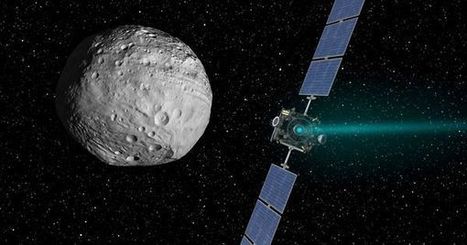
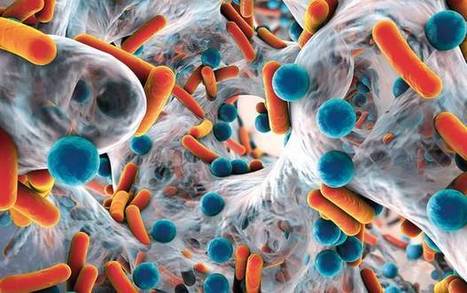

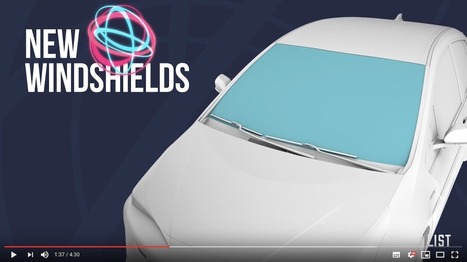

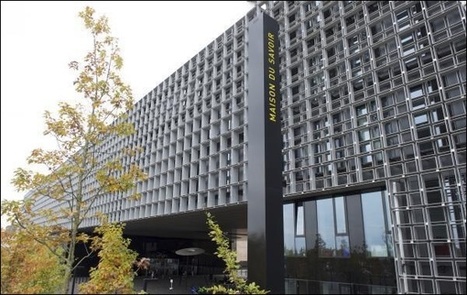
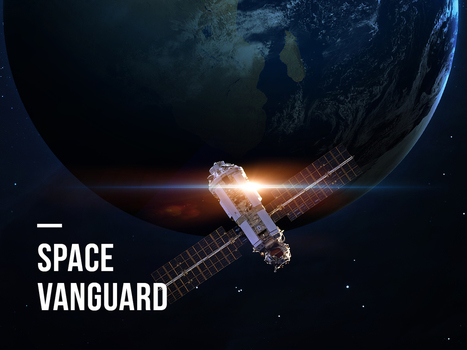

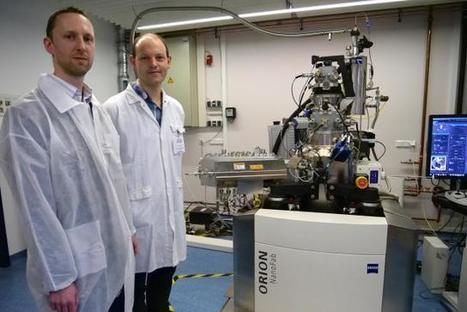
![Kniwwelino Online Documentation [Kniwwelino Documentation] | Made in Luxembourg | #LIST #Europe #Coding #Maker #MakerED #MakerSpaces #Creativity #ModernEDU #ModernLEARNing #LEARNingByDoing | Luxembourg (Europe) | Scoop.it](https://img.scoop.it/ZMMjRAWPJdkkYHLJ-qreeTl72eJkfbmt4t8yenImKBVvK0kTmF0xjctABnaLJIm9)



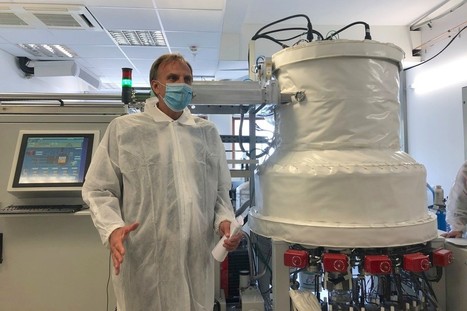
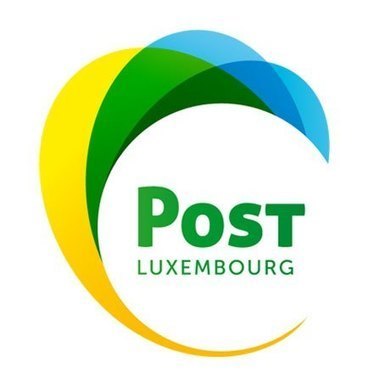

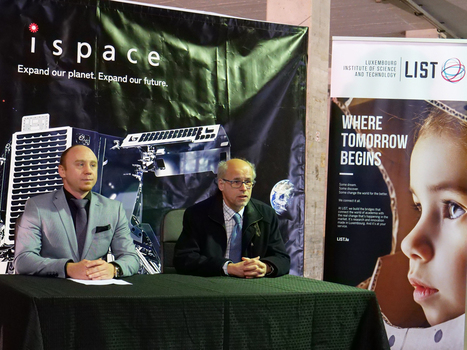
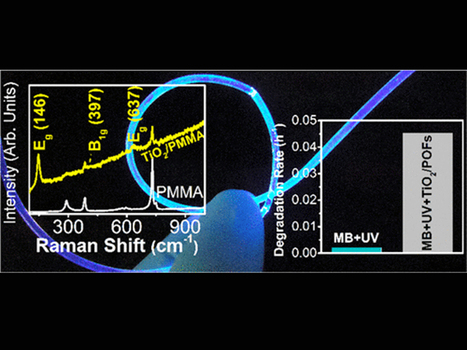
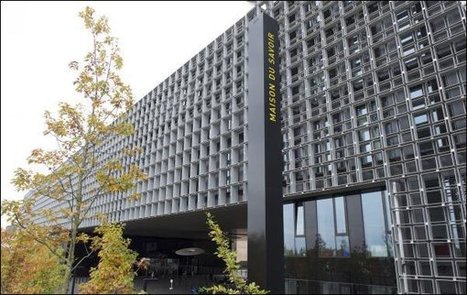
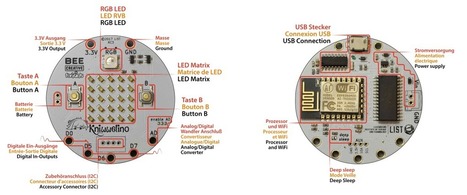
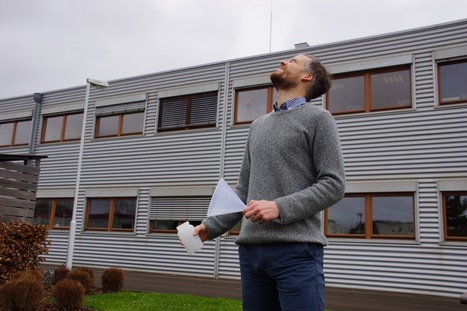
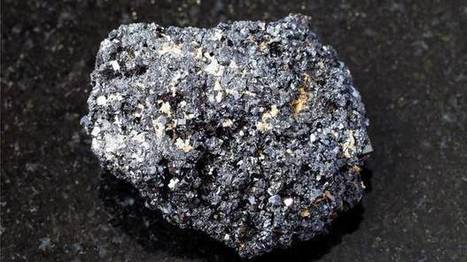
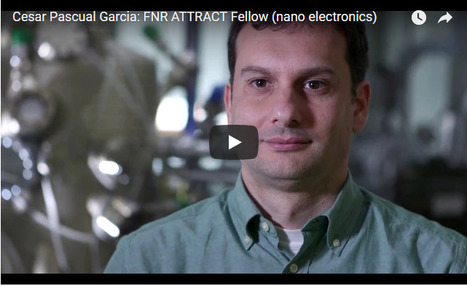
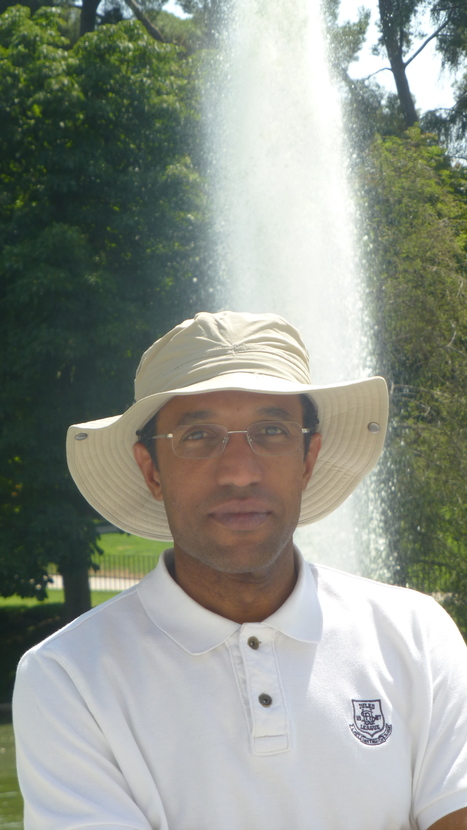





https://acheterozempic5mg.com/
https://acheterozempic5mg.com/shop/
https://acheterozempic5mg.com/product/acheter-adipex-37-5-mg/
https://acheterozempic5mg.com/product/acheter-mounjaro-en-ligne/
https://acheterozempic5mg.com/product/acheter-ozempic-0-25/
https://acheterozempic5mg.com/product/acheter-ozempic-1mg/
https://acheterozempic5mg.com/product/acheter-ozempic-0-5-mg/
https://acheterozempic5mg.com/product/acheter-ozempic-2mg/
https://acheterozempic5mg.com/product/acheter-saxenda-en-ligne/
https://acheterozempic5mg.com/product/acheter-wegovy-en-ligne/
https://acheterozempic5mg.com/product-category/medicaments-contre-l...
https://acheterozempic5mg.com/product/acheter-de-loxycodone/
https://acheterozempic5mg.com/product/acheter-percocet-en-ligne/
https://acheterozempic5mg.com/product/acheter-morphine-en-ligne/
https://acheterozempic5mg.com/product/acheter-depo-testosterone/
https://acheterozempic5mg.com/product/acheter-vyvanse-en-ligne/
https://acheterozempic5mg.com/product/acheter-zepbound-en-ligne/
https://ozempickopen.com/
https://ozempickopen.com/shop/
https://ozempickopen.com/product-categorie/weight-loss-medications/
https://ozempickopen.com/product/koop-ozempic-0-25mg/
https://ozempickopen.com/product/koop-ozempic-0-5mg/
https://ozempickopen.com/product/koop-ozempic-1mg-online/
https://ozempickopen.com/product/koop-ozempic-2mg-online/
https://ozempickopen.com/product/koop-adipex-online/
https://ozempickopen.com/product/mounjaro-kopen/
https://ozempickopen.com/product/koop-mounjaro-online/
https://ozempickopen.com/product/saxenda-kopen/
https://ozempickopen.com/product/koop-wegovy-online/
https://ozempickopen.com/product/koop-zepbound-online/
https://ozempickopen.com/product/koop-rybelsus-online/
https://ozempickopen.com/product/koop-oxycodon-5mg/
https://ozempickopen.com/product/koop-oxycodon-10-mg/
https://ozempickopen.com/product/oxycodon-kopen-online/
https://ozempickopen.com/product/oxycodon-kopen/
https://ozempickopen.com/product/koop-morfine-online/
https://ozempickopen.com/product/koop-depo-testosterone/
https://ozempiccomprar1mg.com/
https://ozempiccomprar1mg.com/compra-ahora/
https://ozempiccomprar1mg.com/product/ozempic-comprar-sin-receta/
https://ozempiccomprar1mg.com/product/comprar-ozempic-online/
https://ozempiccomprar1mg.com/product/comprar-ozempic/
https://ozempiccomprar1mg.com/product/comprar-ozempic-2mg/
https://ozempiccomprar1mg.com/product/comprar-mounjaro-sin-receta/
https://ozempiccomprar1mg.com/product/comprar-saxenda-espana/
https://ozempiccomprar1mg.com/product/comprar-wegovy-en-linea/
https://ozempiccomprar1mg.com/product/comprar-actiskenan/
https://ozempiccomprar1mg.com/product/comprar-metadona-en-linea/
https://ozempiccomprar1mg.com/product/comprar-oxicodona-5mg/
https://ozempiccomprar1mg.com/product/comprar-oxycontin-10mg-en-linea/
https://ozempiccomprar1mg.com/product/comprar-depo-testosterone/
https://ozempickopen.com/product/koop-oxycodon-10-mg/
https://ozempickopen.com/product/oxycodon-kopen-online/
https://ozempickopen.com/product/oxycodon-kopen/
https://ozempickopen.com/product/koop-oxycontin-online/
https://ozempickopen.com/product/koop-morfine-online/
https://ozempickopen.com/product/koop-adipex-online/
https://ozempickopen.com/product/koop-depo-testosterone/
https://acquistoozempic.com/
https://acquistoozempic.com/acquista-il-tuo-iniettabile-ozempic/
https://acquistoozempic.com/Prodotto/acquista-ozempic-0-25-mg/
https://acquistoozempic.com/Prodotto/acquisto-ozempic-senza-ricetta/
https://acquistoozempic.com/Prodotto/acquista-ozempic-1mg/
https://acquistoozempic.com/Prodotto/acquisto-ephedrine/
https://acquistoozempic.com/Prodotto/acquista-phentermine-online/
https://acquistoozempic.com/Prodotto/acquista-saxenda-online/
https://acquistoozempic.com/Prodotto/acquisto-wegovy-online/
https://acquistasubutexonline.com/
https://acquistasubutexonline.com/prodotto/
https://acquistasubutexonline.com/prodotto/acquista-ozempic/
https://acquistasubutexonline.com/prodotto/acquista-saxenda-online/
https://acquistasubutexonline.com/prodotto/acquista-wegovy-in-italia/
https://acquistasubutexonline.com/prodotto/acquista-zepbound/
https://acquistasubutexonline.com/prodotto/acquista-subutex-online/
https://acquistasubutexonline.com/prodotto/acquista-methadone-in-it...
https://acquistasubutexonline.com/prodotto/acquista-actiskenan-online/
https://acquistasubutexonline.com/prodotto/acquista-morphine-online/
https://acquistasubutexonline.com/prodotto/acquista-ossicodone-online/
https://acquistasubutexonline.com/prodotto/efedrina-acquisto-online/
https://acquistasubutexonline.com/prodotto/acquista-vyvanse-online/
https://acquistasubutexonline.com/prodotto/acquista-methadone-in-it...
https://acquistasubutexonline.com/prodotto/acquista-adipex-online/
https://acquistasubutexonline.com/prodotto/acquista-victoza-online/
https://acquistasubutexonline.com/prodotto/acquista-qsymia-online/
Aeropuerto Adolfo Suárez Madrid-Barajas
@gmail.com
koop ozempic Nederland
koop ozempic voor gewichtsverlies
Koop pillen om af te vallen
koop ozempic 0.25 mg
koop depo testosterone 200mg
koop wegovy
acquista saxenda
acquista subutex online
acquista ozempic
acquista qsymia
koop ozempic Amsterdam
koop ozempic Rotterdam
koop ozempic Eindhoven
mounjaro koop
zepbound koop
rybelsus koop
saxenda koop
wegovy koop
koop oxycodon-10
oxycodon 40mg koop
koop oxycodon
oxycontin koop
morfine koop
adipex koop
koop Depo Testosterone
acquisto ozempic
ozempic prezzo
acquistare ozempic 0.5mg
acquistare ozempic senza ricetta
acquistare ozempic 1mg
acquistare ephedrine
acquistare phentermine
acquistare saxenda
acquistare wegovy
ozempic comprar 1mg "> acquistare ozempic 1mg
comprar ozempic 1mg
ozempic comprar sin receta
ozempic comprar online
ozempic comprar
comprar ozempic 2mg
comprar mounjaro
comprar wegovy
comprar saxenda
comprar oxycontin-10mg
comprar depo testosterone
acheter ozempic
Acheter Ozempic 0.25 mg
Acheter Ozempic 0.25 mg
Acheter Ozempic 0.5 mg
ozempic perte de poid
ozempic saxenda
ozempic wegovy en ligne
ozempic perte de poid
ozempic oxycodone en ligne
ozempic percocet en ligne
ozempic morphine en ligne
ozempic testosterone en ligne
ozempic vyvanse en ligne
ozempic zepbound en ligne
acquista subutex online
acquista saxenda
acquista subutex
acquista victoza
acquista qsymia
acquista duromine
acquista methadone
acquista actiskenan
acquista morphine
acquista oxicodona
acquista sevredol
acquista dexedrine online
acquista pillole
acquista ritalin
acquista vyvanse
efedrina acquisto
acquista adipex
acquista belviq
acquista duromine
acquista ozempic
acquista qsymia